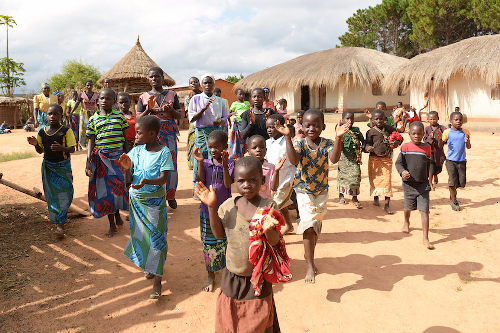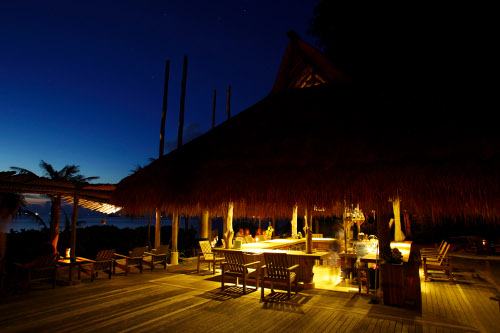Affordable & Clean Energy
Despite recent improvements to energy giving nearly 9 out of 10 people access, 840 million people remain without electricity. 37% of the global population, or 3 billion people, still use fuel and stove combinations that pollute household air, such as kerosene, wood, coal, charcoal or even dung for cooking and heating, resulting in 4 million premature deaths annually. (UN, 2021)
Reliable and affordable electricity saves and improves lives. Among its many benefits, electricity powers computers, schools, charges phones, keeps food cold and businesses and essential infrastructure functioning. But, energy is also the main contributor to climate change, producing more than 70% of greenhouse gases, requiring investment and development in renewable sources.
For this reason, Goal 7 of the UN 17 Global Goals of the 2030 Agenda for Sustainable Development, fundamental to human prosperity, is:
SDG #7 “Ensure access to affordable, reliable, sustainable and modern energy for all”.
Progress on Sustainable Development Goal 7 Affordable & Clean Energy
733 million people lack electricity: 10% of world population, hundreds of millions more only have limited or unreliable access. (2020)
91% of world population have access to elecricity, up from 78% in 2000, and by a billion / 83% in 2010, 87% in 2015 (2020).
85% coverage in rural areas lags Latin America, the Caribbean and Eastern and South-Eastern Asia regions, all over 98% (2018).
53% only of the population in sub-Saharan Africa have electricity: 548 million people still lack (2018).
73%: the proportion of human-caused greenhouse gases attributed to energy (UNDP, 2020)
40%: The potential emissions savings from energy efficiency alone, without requiring new technology.
2.4 billion: people rely on polluting and unhealthy fuels for cooking and heating, almost a third of the world’s population.
69%: Have access to clean cooking fuels, rising from 57% in 2010 (2020). But progress is too slow: In sub-Saharan Africa in particular, advances in clean fuels and fuel-efficient cooking systems have not kept pace with population growth by 18 million people/year.
4.3 million deaths in 2012 were attributed to indoor air pollution from combustible fuels for household energy (woman & girls 60%).
17.7%: The renewable energy share of total final energy consumption (2019), rising from 16.6% in 2010. Much faster change is required to meet Paris climate goals. Only since 2012 has the growth of renewables outpaced the growth of total energy consumption.
The highest share of renewable energy in total energy consumption is in Sub-Saharan Africa, although 85% of it was due to traditional uses of biomass. Latin America and the Caribbean had the largest share of modern renewables among all regions thanks to hydropower and extensive use of modern bioenergy across all sectors. (2017)
$10.9 billion (down nearly 24% on 2018) international public financial flow to developing countries to support clean energy (2019).
Split: hydropower 46%, solar 19%, wind 7%, geothermal 6% (2017).1.9%: The energy efficiency rate, falling short of the 3.2% required for 2030 target (2010-19).
11.5 million: record employment in the renewable energy sector; with a potential 18 million required to deliver climate goals.
670 million people are projected to still lack access to electricity in 2030, 8% of the world’s population.
The Impact of Covid on SDG 7 Affordable & Clean Energy
Affordable and reliable energy is critical for health facilities, but in sub-Saharan Africa, one quarter are not electrified, and another quarter experience unscheduled outages, affecting their capacity for essential health services and magnifying the crisis.
Energy is required for communities to pump clean water, critical to managing the pandemic and health.
Energy is key to enabling communications and IT services that connect people while maintaining social distancing, including for out-of-school children to learn remotely, and access to health advice and vital information.
At the same time, the crisis disrupts the progress of SDG7, energy supply chains and services, jobs and income to pay for them, and the cuts the price of oil due to lockdowns’ falling demand, discouraging growth in renewable energy.
Lockdowns also showed a 7% drop of emissions is possible with the cut of industrial activity and transport mobility: but only short term, bouncing back in 2021. 7% is the level of emissions cut required annually until 2030 to meet Paris targets.
Challenges of SDG7, Energy
Finite Fossil Fuels: The fossil fuels we have used historically, such as coal, oil and natural gas, currently the world's primary energy sources, are finite in supply. It’s not a matter of if they run out, but when: We are using them much faster than they can reproduce, formed as they are over millions of years compressing organic material, including carbon which gives off emissions when combusted. We have already passed ‘peak oil’, at current usage it may be gone by 2052. Switching to gas could then extend just 8 further years to 2060; filling its gap with coal could maybe last until 2090. During that time, we may find more reserves of fossil fuels, but they’re likely smaller than the rate at which our world’s developing population is consuming them. (Stanford)
Climate Change: Energy is the main contributor, producing around 70% of global greenhouse gas emissions (UN, 2021): burning fossil fuel emits carbon dioxide into the atmosphere, creating a man-made greenhouse effect for the world, whose insulation creates global warming. By 2030 global demand for energy is expected to rise by 20–35% (Better Growth, Better Climate, 2014). Stabilizing global temperature will require de-carbonising energy consumption, a shift to renewable or nuclear power from fossil fuels, significant energy efficiency and large-scale deployment of carbon capture and storage (CCS) for remaining fossil fuel use.
Energy poverty: The poorest in the world are the least likely to have access to a source of power, and are much more likely to remain poor as long as they are not connected. In sub-Saharan Africa electrification is lowest, home to around 65% of those living without electricity.
Poor access to energy in developing countries slows the growth of GDP, a barrier to economic growth for businesses, the most effective means of reducing poverty, yet impossible without adequate, reliable and competitively priced modern energy. Even countries with access to energy often have highly unreliable service: One in three developing countries experiences at least 20 hours of power outages a month, and when power is available, it can be expensive (World Bank, 2015).
Politics: As a result, governments subsidise demand for fossil fuels: To the tune of nearly $550 billion of public money worldwide in 2013, making energy access a political issue, and an opportunity cost for sustainable development priorities (World Bank, 2015) and capital-intensive renewables investment.
Health and Well-being: Switching from fossil fuels to renewable and nuclear power would not only reduce the risk of climate change, but also reduce pollution, reducing mortality, disease, and ecosystem and biodiversity damage, for a healthier world.
Energy intensity is the ratio of units of energy per unit of GDP.
From 2012 to 2014, 15 of the world’s 20 largest energy-consuming countries reduced theirs - mainly through greater efficiencies in the industry and transport sectors. From 2010 to 2016, global primary energy intensity improved from 5.9 to 5.1, a rate of improvement of 2.3%. In 2017, global primary energy intensity was 5.0 megajoules per dollar – a 1.7% annual improvement from 2016, but the lowest annual improvement since 2010. Progress is not sufficient to meet the 3% now needed to reach target 3 of Sustainable Development Goal 7, doubling the global rate of improvement in energy efficiency (UN, 2021).
Investment: The financing requirement to meet the target for SDG 7 —across renewable energy, energy efficiency and universal energy access - is estimated at US$ 1.3 to 1.4 trillion per year until 2030 (World Energy Outlook, 2020; Financing SDG 7, United Nations, 2019).
To meet a 2 degree limit to global warming, the cost of electricity could rise by 30-50% by 2050. To limit the cost increase we must invest in technology innovation to lower the cost of generation and improve energy efficiency and consumption.
To decarbonise the global electricity supply, at least 65% must be generated from renewables by 2050 (PWC / International Energy Agency, Energy Technology Perspectives. Harnessing Electricity’s Potential Factsheet, 2014).
Most growth in renewable energy has been concentrated in electricity, due to rapid expansion of wind and solar power, and prompted by policy support and cost reductions, but electricity makes up only 20% of final energy use. The majority 80% is concentrated in the heat and transport sectors where modern renewables penetrated only 9.2% and 3.3% of the global market respectively (2017).
Improving energy efficiency, increasing energy access and affordability, are core to the global goal of reducing greenhouse gas emissions.
What's that got to do with Tourism?
Tourism, as one of the largest economic global sectors, is one of the largest energy-consuming sectors. Tourists also use energy (and water) with a greater intensity than local people, often to local detriment where scarcity exists.
With over a billion tourists a year set to continue increasing, tourism’s energy consumption looks only set to grow. So how hospitality gets its fuel needs provided, and how that affects and is affected by the processes of the world’s climate and ecosystem, is vital.
Tourism is both a victim of, and contributor to climate change: Rising sea levels, melting glaciers, floods, avalanches, water scarcity, deforestation, biodiversity loss, desertification, wildfires, drought and diseases hurt the tourism economy.
But these impacts are in part created by tourism’s operations, which contribute around 8% of global greenhouse gas emissions: from aviation, accommodations, restaurants, activities and other transportation. The consequences of tourism not utilising renewables can seriously impact a business, industry and world.
As such, tourism can be incentivised to help accelerate the shift toward renewable energy, increase its share in the global energy mix, help reduce greenhouse gas emissions, contribute to innovative energy solutions in urban, regional and remote areas and provide reliable energy for guests.
Customers and investors are increasingly expecting tourism businesses to be responsible and held accountable for their carbon emissions and reports. Responsible organisations voluntarily follow codes of conduct and certification schemes, such as we highlight in our Places information.
A carbon neutral travel and tourism sector has to be a long-term goal of the industry. Therefore, how do tourism businesses not create negative impacts, and preferably create positive impacts, with regards to energy?
Alternative energies for sustainable tourism and the future
Tourism and energy need not be opposed to each other: With renewables, sustainable energy and tourism can complement each other.
Sustainable energy is that which is collected from renewable sources, meaning those which are naturally replenished, such as solar from sunlight, wind, water from rain, tides, waves, and geothermal heat: natural resources to which many tourism establishments have access.
With its large consumption of energy, tourism has a great cost incentive to utilise renewable energy for greater efficiencies and longer term cost savings – the purely economic ‘business case’ for sustainable tourism makes sense, as well as for the planet. Initial outlay may be required to change but over time works out much cheaper than previously-used energy sources. By measuring and monitoring consumption, organisations (and guests where they are aware!) can become more aware of managing consumption, efficiencies and thus longer term impacts.
Tourism is thus at the forefront of many innovative sustainable energy solutions. Whether it’s airlines making aircraft lighter, using biofuels or fuel-efficient taxi-ing, hotels saving energy with key-cards or towel reuse, or hospitality supporting local communities with energy services and related economic opportunities, the tourism industry knows it has to reduce its carbon emissions for a sustainable future. But with more than a billion tourists per year, more must be done.
What are some innovative tourism organisations doing to set the bar higher?
How Can Tourism Help?
Energy efficiency
Using less energy to perform the same task (eliminating energy waste), is often the most immediate, and cheap, way to reduce the use of fossil fuels. If we applied all the energy efficiency technologies available today, we could cut energy consumption straight away by a third (World Bank, 2015).
There are great opportunities for using less energy in tourism and transport, eg:
- choosing LED light bulbs and energy efficient appliances like fridges and washing machines.
- refurbishing to upgrade heating, insulation, windows and cooling systems.
- using energy efficient vehicles, especially electric.
- changing standard operating procedures to decrease energy use.
- offering incentives to guests to use less than average energy.
At Nikoi Island, there’s no televisions, dvds, telephones or mini bar fridges. There’s low voltage fans, LED or CFL lighting, with recycled cooking oil tiki lamps along pathways so as not to disorientate nightlife such as nesting turtles.
Energy Innovation
Continual growth in air travel due to lower costs has shown reducing emissions by reducing consumption is not likely, despite efficiency innovations to airframes, engines, aerodynamics and flight operations: air travel is set to increase, despite a plan to offset carbon emissions, but only voluntarily on increased from international flights after a base year of 2020.
If you go to Lapa Rios in Costa Rica or Jicaro Island Ecolodge in Nicaragua, from Costa Rica’s international airport, you can fly Nature Air, a carbon neutral domestic Costa Rican Airline.
The reliance on offsetting (eg. tree planting to reduce equivalent CO2 in the atmosphere) leads to effectiveness for climate change mitigation being questioned. But where land transport has alternatives (rail, fuel cells and electric cars), to reduce carbon, aviation does not.
Energy Generation
Despite rapid growth in recent years, renewable energy still makes up a relatively minor share of total energy consumption. The challenge is to increase the share of energy generated through renewable sources in the transport and heat sectors, which together account for 80% of global energy consumption. (UN, 2019)
It’s also important to balance demand and supply, in total quantity and source, eg. using more or less from wind when there's a spike in demand or little wind, balanced by alternative energy sources.
Solar: ‘Photovoltaics’ (PV) is the conversion of light into electricity using semiconducting materials. A typical photovoltaic system employs solar panels, each comprising a number of solar cells, which generate the electrical power. PV installations may be ground-mounted, rooftop mounted or wall mounted, and may be fixed, or use a solar tracker to follow the sun across the sky. Solar PV generates no pollution and no greenhouse gas emissions once installed, with simple scalability. Cells don't need direct sunlight to work – just daylight - they can still generate electricity on a cloudy day.
Low-cost small-scale solar power systems can dramatically accelerate energy access, helping countries like Bangladesh to bring energy to over 850,000 low-income households since 2003 - the largest national off-grid electrification program in the world.
Campi ya Kanzi only uses renewable energies, with photovoltaic panels for electricity and solar boilers for hot water, contributing to minimising carbon footprint. Energy consumption is measured and monitored monthly, with sub-meters in all guest rooms. The limited emissions that occur are offset in the MWCT REDD+ Chyulu Carbon Project with all guests charged a nominal fee for carbon generated during their stay. Carbon footprint zero is achieved. In addition, The Maasai Wilderness Conservation Trust has enabled solar power for Iltilal Primary School’s 1000 children.
Lapa Rios’ solar system provides for all water heating and lighting needs, as does Chumbe Island’s unobtrusive banda roof solar panels, providing charge for battery storage for energy requirements, including the office wifi.
At Nikoi Island, solar panels provide hot water and create an excess of energy for battery storage so that generators can be switched off 12 hours per day.
Jicaro Island’s solar thermal system not only allows the lodge and its guests to have hot water without the need for fossil fuel, but solar panels have also enabled the community to have electricity they didn’t have before, such as for the clean water pumps Jicaro also installed, for making the school usable after dark for adult education, and for a new community health centre.
Wind: Wind has been used for centuries for power, such as windmills to convert the energy of wind into rotational energy by means of vanes (sails) to mill grain in agriculture and pump water. Likewise, modern windmills tend to take the form of wind turbines used to generate electricity, or windpumps used to pump water, either for land drainage or to extract groundwater.
At Lapa Rios, wind is used to cool buildings, produce power and pump water.
Pangaea Exploration’s sails and almost 1kw of wind/solar power long-range unsupported journeys at substantially lower cost than traditional research voyages.
When the wind isn't blowing, grid operators have to find ways to adjust: Capturing wind's electricity as it is generated, storing and saving it for use when demand is high, could make a big difference as the technology develops. Wind farms may be spaced out so as wind shifts, one can power up as another powers down. Transmission systems now carry wind electricity from remote places with plenty of it to big cities that may be even thousands of miles away.
Hydropower: Water-powered hydroelectricity has been created since ancient times, using the power derived from the energy of falling water or fast running water, for useful purposes, such as watermills for irrigation. Whilst hydropower may not add large amounts of carbon to the atmosphere or emit pollution, dams can also have significant negative social and environmental impacts, for example altering a river’s flow, creating floods or deepening riverbeds, transforming upstream and downstream ecosystems, thus species, blocking fish migrations, affecting deltas, barrier islands, fertile floodplains, coastal wetlands and their populations. Submerged plant life can decay anaerobically (in the absence of oxygen) generating greenhouse gases like methane.
Electricity generated by hydro-electric power plants is the cheapest electricity, so it is no surprise that in 2015 hydropower generated 16.6% of the world's total electricity and 70% of all renewable electricity, and was expected to increase about 3.1% each year for the next 25 years.
At Tiger Mountain Pokhara Lodge, mains electricity is used rather than an independent renewable source, as the Nepal Electricity Board mostly supplies via hydropower. However, regular power cuts mean the Lodge is forced to run a backup diesel generator.
At Nikoi Island, water filtering, treating and pressurising accounts for around 30% total energy use, highly efficient shower heads reduce water consumption by 20% thus energy consumption too.
At the Global Development workshops in Malawi you can witness hydro-electric power in real-life working action at a grassroots level and how it interacts with local communities.
Biomass: Biomass means getting energy by burning wood and other organic matter. Biomass most often refers to plants or plant-based materials that are not used for food or feed, specifically called lignocellulosic biomass.
As an energy source, biomass can either be used directly via combustion to produce heat, or indirectly after converting it to various forms of biofuel, in solid, liquid or gas form. Burning biomass releases carbon emissions, around a quarter higher than burning coal, but has been classed as a "renewable" energy source in the EU and UN, because plants can be regrown.
At Campi Ya Kanzi, Kenya, all food is cooked in stoves using a charcoal made from coffee husks, approved by the UN Environment Programme.
SEED Madagascar is supporting people to build fuel-efficient stoves to reduce pressure on protected forests and improve well-being by minimising smoke.
At Lapa Rios in Costa Rica, food scraps fed to pigs creates methane gas to fuel the staff kitchen stove. See this on the “Twigs, Pigs and Garbage” behind-the-scenes tour of the premises to witness the commitment to a more sustainable way of life, a unique experience so appreciated by guests it’s being replicated at Jicaro Island Ecolodge, Nicaragua!
Geothermal: Geothermal energy is the energy stored in the form of heat beneath the earth's surface. From hot springs, geothermal energy has been used for bathing since Paleolithic times and for space heating since ancient Roman times, but it is now better known for electricity generation.
With 99.9% of the planet at a temperature greater than 100°C, geothermal energy is a significant carbon-free, sustainable resource that can provide a reliable, uninterrupted supply of heat that can be used to heat homes and office buildings and to generate electricity.
Environmentally friendly, whilst geothermal wells release greenhouse gases trapped deep within the earth, the emissions are much lower per energy unit than those of fossil fuels.
Historically limited to areas near tectonic plate boundaries, geothermal energy plants are normally located in regions where there is volcanic activity, such as in Iceland. Other countries which obtain significant amounts (> 10 per cent) of their electricity from geothermal sources including El Salvador, Kenya, the Philippines, Costa Rica and New Zealand. (British Geological Survey)
At the Global Development workshops in Malawi witness renewable energy, solar energy, hydro-electric power and climate change in real-life working models at a grassroots level interacting with local communities.
Energy Storage
Big breakthroughs have also come in the form of energy storage. New battery storage technology could see the world moving much more rapidly to at least 50% renewable energy – or even greater.
Energy efficient design
From the outset, design can make a big difference to energy consumption. For example, reducing room sizes can reduce energy use per guest night, and resorts can be designed to reduce the need for gas-guzzling vehicles.
At Nikoi Island, Chumbe Island, Jicaro Island and Lapa Rios the accommodation is designed to encourage air-flow, so as to avoid air conditioning and minimise energy consumption.
Human Behaviour:
Places also encourage guests to change their behaviour to be more energy-wise, for example by switching off lights, quick showers to use less water, driving in a more efficient manner, and using public transport or pedal power.
Links with the other GlobalGoals
Energy is central to nearly every major challenge and opportunity the world faces, thus access to energy crucial for achieving almost all of the Sustainable Development Goals.
Goal 1 - End Poverty: Will be helped by putting an end to energy poverty.
Goal 4 - Quality Education: Can continue with light to study, where lack of traditional energy ended the day’s education.
Goal 6 - Water: Energy provides power to pump water for irrigation, to process crops, for clean drinking and hygienic sanitation.
Goal 7 - Health services & infrastructure require sustainable energy; health and energy access vulnerability often go together.
Goal 8 - Decent Work & Economic Growth: can be empowered with energy supply previously inaccessible.
Goal 10 - Reduced inequalities: Energy access is not equal around the world or within nations.
Goal 12 - Responsible consumption and production: Sustainable energy can decouple economic growth from environmental degradation.
Goal 13 - Climate Action: We must de-link energy use from emissions by decarbonising our power sources, and reducing emissions from energy to reduce rising global temperatures.
Goal 15 - Life on Land: Less logging for firewood means reduced deforestation and its effects.
Goal 16 - Peace and Justice: Energy is vital for re-development in post-conflict settings.
< Clean Water & Sanitation SDG6: Previous
Next: SDG8 Employment & Decent Work
































